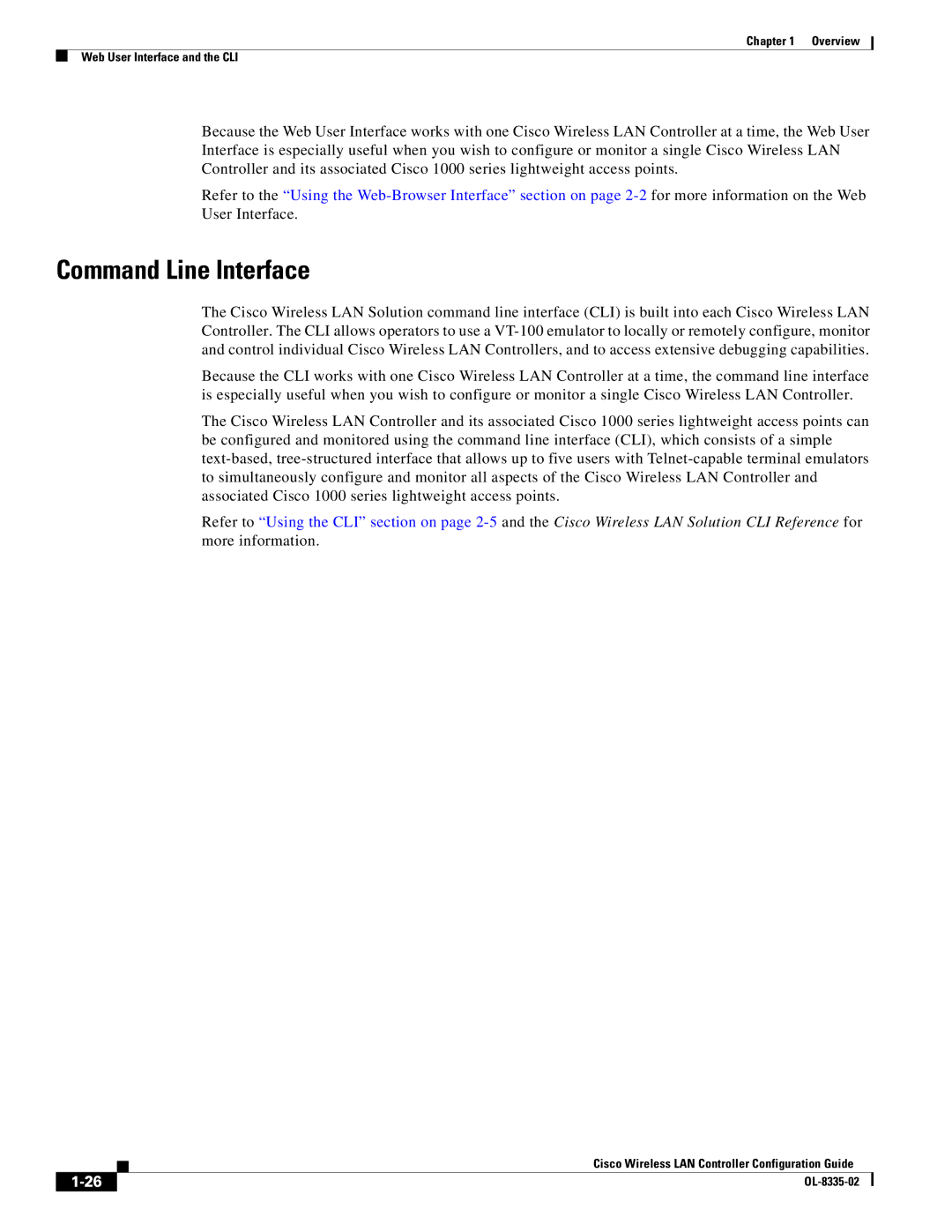
Chapter 1 Overview
Web User Interface and the CLI
Because the Web User Interface works with one Cisco Wireless LAN Controller at a time, the Web User Interface is especially useful when you wish to configure or monitor a single Cisco Wireless LAN Controller and its associated Cisco 1000 series lightweight access points.
Refer to the “Using the
Command Line Interface
The Cisco Wireless LAN Solution command line interface (CLI) is built into each Cisco Wireless LAN Controller. The CLI allows operators to use a
Because the CLI works with one Cisco Wireless LAN Controller at a time, the command line interface is especially useful when you wish to configure or monitor a single Cisco Wireless LAN Controller.
The Cisco Wireless LAN Controller and its associated Cisco 1000 series lightweight access points can be configured and monitored using the command line interface (CLI), which consists of a simple
Refer to “Using the CLI” section on page
Cisco Wireless LAN Controller Configuration Guide
| ||
|
